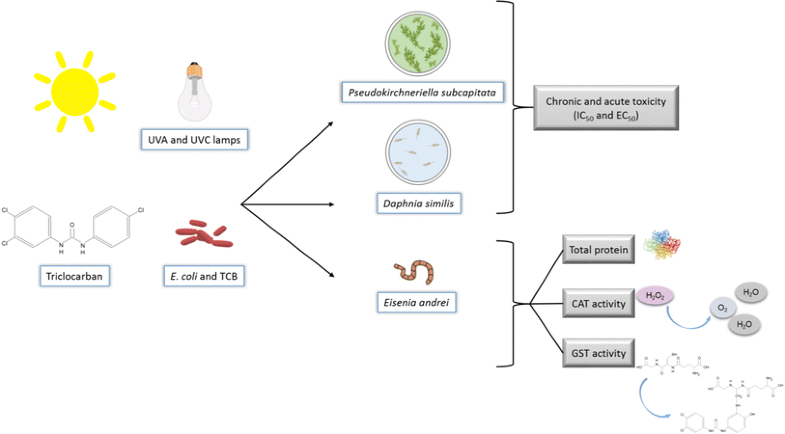
|
|||||
|
|
Triclocarban: UV photolysis,wastewater disinfection,and ecotoxicity assessment using molecular biomarkers |
|
| Authors: | Suéllen Satyro Enrico Mendes Saggioro Fábio Veríssimo Daniel Forsin Buss Danielly de Paiva Magalhães Anabela Oliveira |
| Affiliation: | 1.Center for the Study of Worker’s Health and Human Ecology, Sergio Arouca National School of Public Health,Oswaldo Cruz Foundation,Rio de Janeiro,Brazil;2.Federal University of Rio de Janeiro, COPPE – Chemical Engineering Program, Centro de Tecnologia,Cidade Universitária,Rio de Janeiro,Brazil;3.Sanitation and Environment Health Department, Sergio Arouca National School of Public Health,Oswaldo Cruz Foundation,Rio de Janeiro,Brazil;4.Federal University of the State of Rio de Janeiro,Rio de Janeiro,Brazil;5.Laboratory of Environmental Health Promoting and Evaluation, Oswaldo Cruz Institute,Oswaldo Cruz Foundation,Rio de Janeiro,Brazil;6.Laboratory of Applied Ecotoxicology to Mining-Metallurgical Industry,Mineral Technology Center,Rio de Janeiro,Brazil;7.Research and Innovation Interdisciplinary Center, Technology and Management Faculty,Polytechnic Institute of Portalegre,Portalegre,Portugal |
| Abstract: | Triclocarban (TCC) is an antibacterial agent found in pharmaceuticals and personal care products (PPCP). It is potentially bioaccumulative and an endocrine disruptor, being classified as a contaminant of emerging concern (CEC). In normal uses, approximately 96% of the used TCC can be washed down the drain going into the sewer system and eventually enter in the aquatic environment. UV photolysis can be used to photodegrade TCC and ecotoxicity assays could indicate the photodegradation efficiency, since the enormous structural diversity of photoproducts and their low concentrations do not always allow to identify and quantify them. In this work, the TCC was efficiently degraded by UVC direct photolysis and the ecotoxicity of the UV-treated mixtures was investigated. Bioassays indicates that Daphnia similis (48 h EC50 = 0.044 μM) was more sensitive to TCC than Pseudokirchneriella subcapitata (72 h IC50 = 1.01 μM). TCC and its photoproducts caused significant effects on Eisenia andrei biochemical responses (catalase and glutathione-S-transferase); 48 h was a critical exposure time, since GST reached the highest activity values. UVC reduced the TCC toxic effect after 120 min. Furthermore, TCC was photodegraded in domestic wastewater which was simultaneously disinfected for total coliform bacterial (TCB) (360 min) and Escherichia coli (60 min). Graphical abstract TCC degradation and ecotoxicological assessment |
| Keywords: | |
| 本文献已被 SpringerLink 等数据库收录! | |
